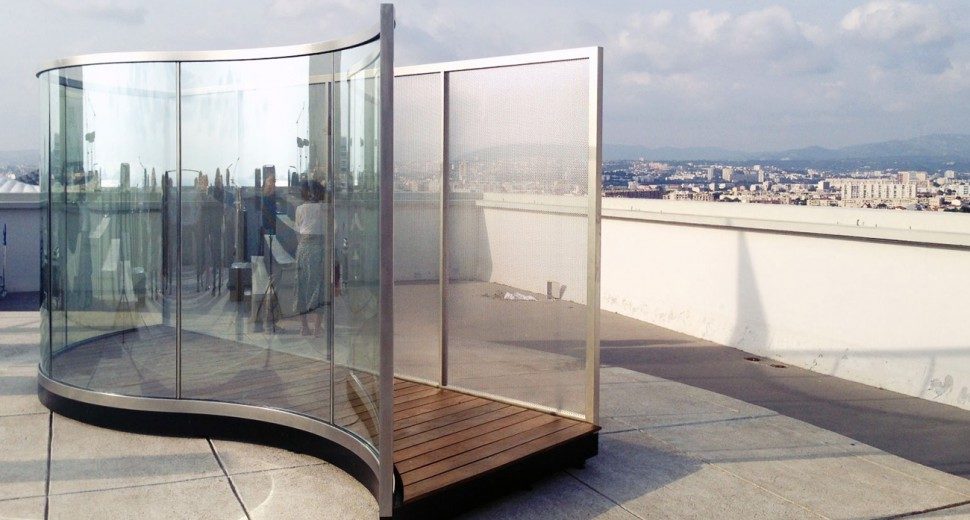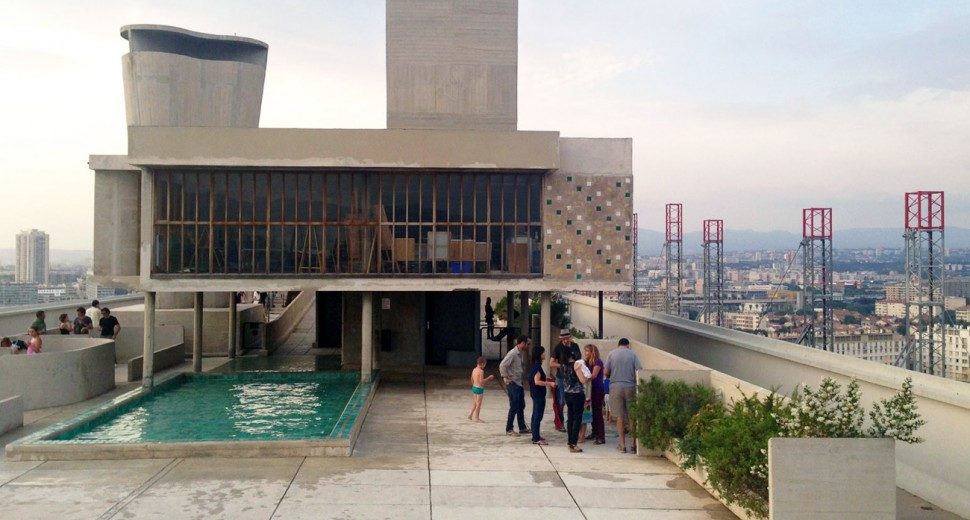Presse, Juin 2020
Photos © Ora-Ito
Dan Graham's latest installation offers a new perspective on Marseille.
American artist Dan Graham’s favourite Jean-Luc Godard film Two or Three Things I Know About Her is set in an ancient city dotted with high-rise buildings. So there’s no venue more fitting than the Marseille Modulor (MAMO) to unveil his latest pavilion installation. In the exhibition ‘Observatory/Playground’ atop Le Corbusier’s towering residential Cité Radieuse, Graham adds a thoughtful, reflective touch to the roof.
French designer and MAMO curator Ora-Ïto says Graham’s exhibition is the final instalment in the trilogy of his ‘first vision’ for the space, which launched in 2013 with Xavier Veilhan’s homage to Le Corbusier. Daniel Buren took over the rooftop last year with his black-and-white stripes in what Ora-Ïto says was an ‘emancipation’ from the imposing austerity of the building’s modern architecture.
When he decided to make the rooftop a public gallery rather than pursuing his original plans of a private penthouse, Ora-Ïto said he had to show artists with a strong vision or risk MAMO falling flat. ‘It’s like putting someone in the arena with lions,’ he said. ‘They would just get eaten by Le Corbusier. You cannot escape Le Corbusier.’
Graham’s almost phantom pavilions survive Le Corbusier as they blend in with the mod concrete curves and pillars. The structures teleport the surrounding cityscape sprawling out to sea and mountains directly to the rooftop in faint hologram-like images reflected in the pavilions’ undulating glass.
Graham said he was not a Le Corbusier fan at first, but grew to like his work. He can rattle off astrological signs of actors, artists and architects and said that Le Corbusier’s Libra tendency to balance male and female aspects comes through in his designs.
One pavilion is an existing structure originally submitted to and rejected by the Bronx Botanical Gardens. Graham chose the other piece in the exhibition to evoke waves. Seven models of his other designs – including his well-known ‘Skateboard Pavilion’ (1989) – and two films accompany the two full-size structures.
Even though Graham has been making his glass and steel pavilion series since the 1980s, well before today’s social media explosion, the reflective walk-in sculptures seem made for the modern vanity of the selfie. Despite the funhouse mirror images begging for a quick snap, the pieces respectfully demand the viewer to observe the scene morphing before them even if only to slow down so as not to walk into the wall.
The private rooftop wading pool on one side of the MAMO makes the Cité Radieuse a literal playground for inhabitants. Graham’s pavilions expand that play area for resident children, as well as their perspective on the city.
In October the wave pavilion will be installed at Place Vendôme in Paris during FIAC, which is a much safer choice than last year’s controversial inflatable tree sculpture that provoked a physical assault on artist Paul McCarthy and an early dismantling of the piece.
With Graham’s exhibition closing MAMO’s first cycle in September, Ora-Ïto promised surprises to come with a teasing mention of opening a new part of the Cité Radieuse as part of plans to expand the gallery.
BY JAKE CIGAINERO

